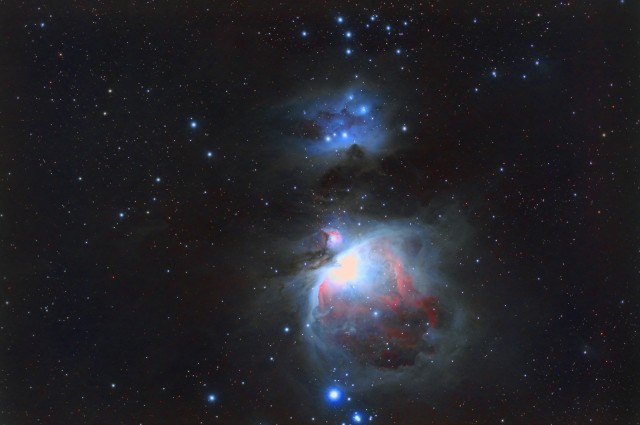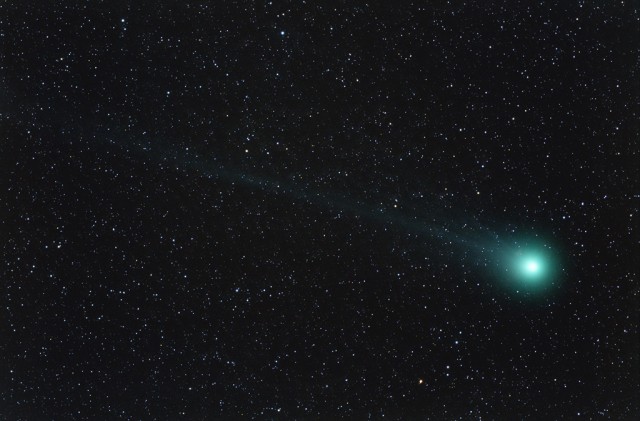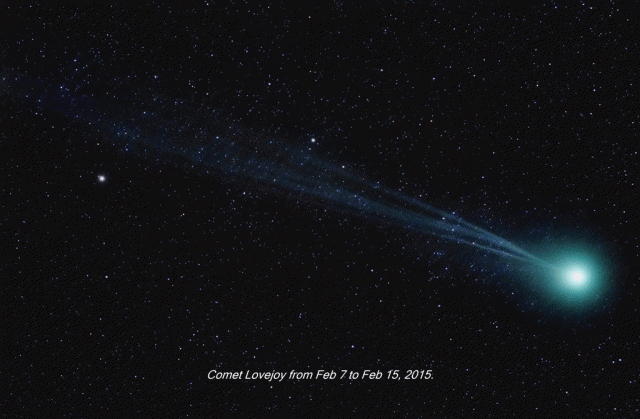
Comet Lovejoy Fades – Lost Lots of Its Tail
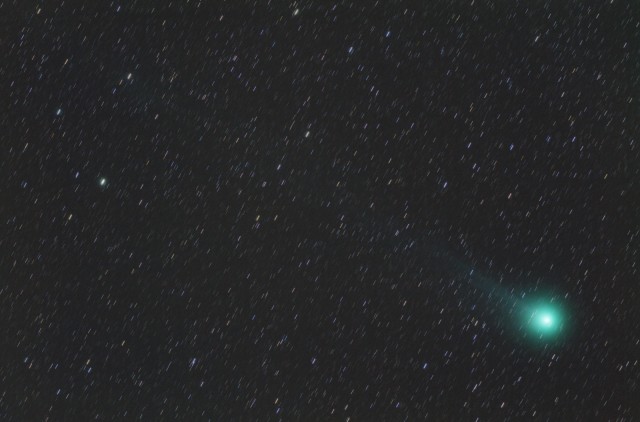
Looks like the disconnection event over the last two days has shortened Lovejoy down to a nub. I expect that it might grow back a new tail, hopefully.
Here’s an another version of the data, but I added 35 minutes more of exposure to the mix:
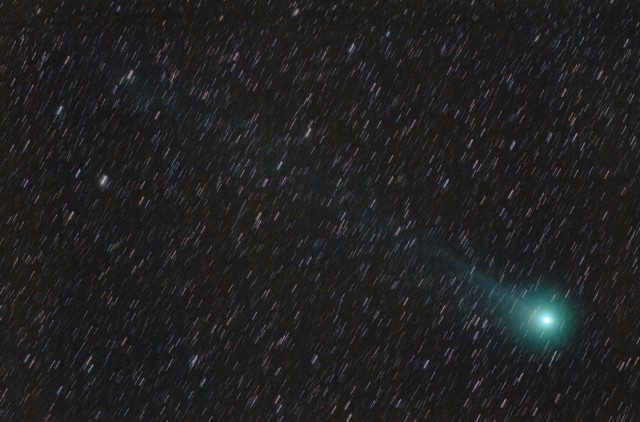
The Orion Nebula with a Stock DSLR
Comet Lovejoy Tail Disruption Event
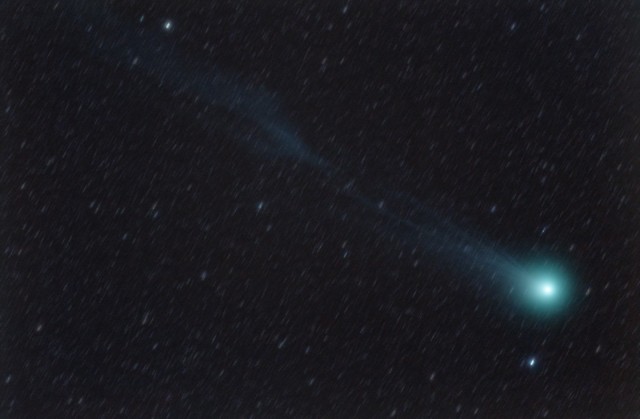
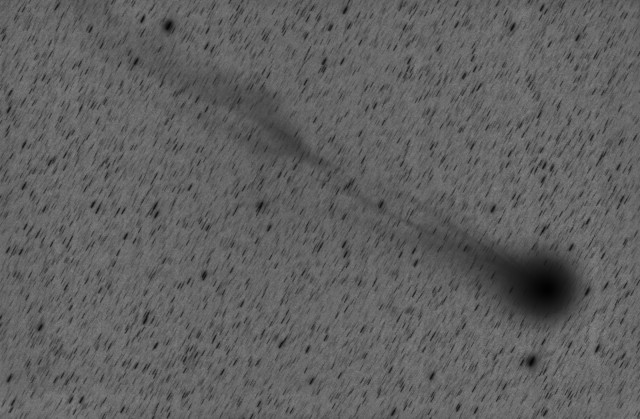
The nearly disconnected tail of Lovejoy blowing in the solar wind. Something in the local space environment disrupted it within the last 2 days, it seems. Probably some kind of solar event like a CME or rogue magnetic field change caused this.
Comet Lovejoy Possible Tail Disconection Event
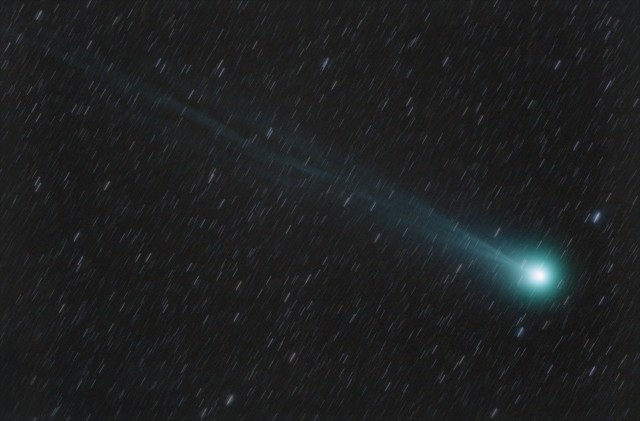
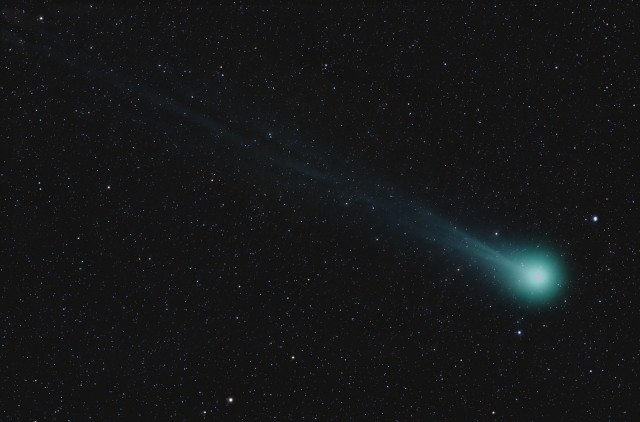
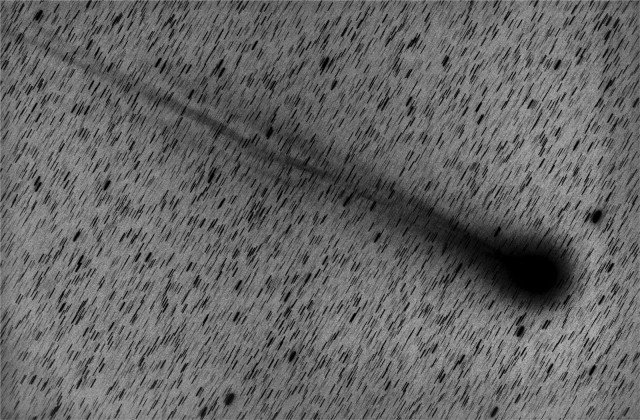
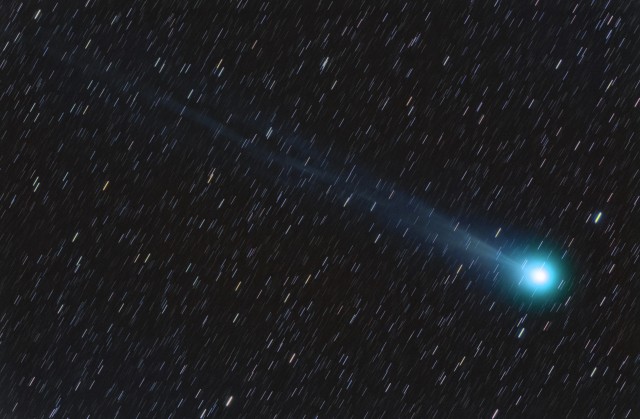
A big knot moving down the tail of Comet Lovejoy with the old tail partially disconnected and hanging on as best as it can.
M78 Reflection Nebula in Orion
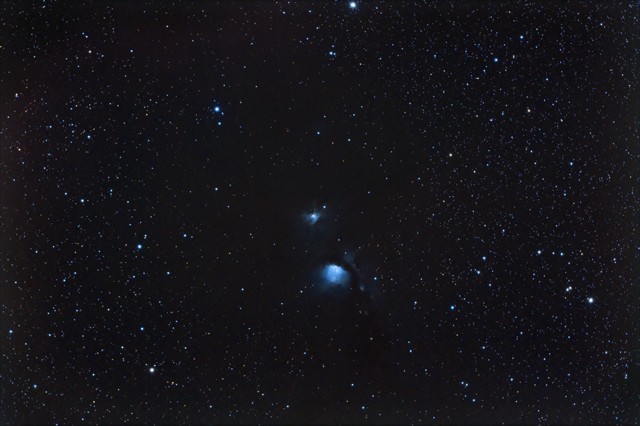
Good transparency and cold temps helps to get good images at ISO 800. 5 minutes subs are not too noisy and stack up nicely. This image is only 110 minutes of integration and could use more time, but it came out fine for an unmodified camera.
The full size version is here.
Comet Lovejoy’s Fantail on Feb 11, 2015, 01:00 UT
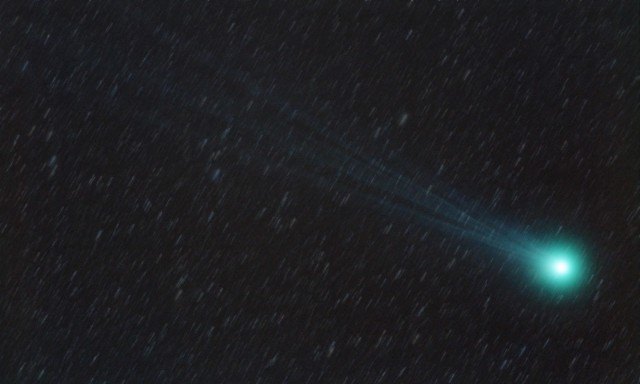
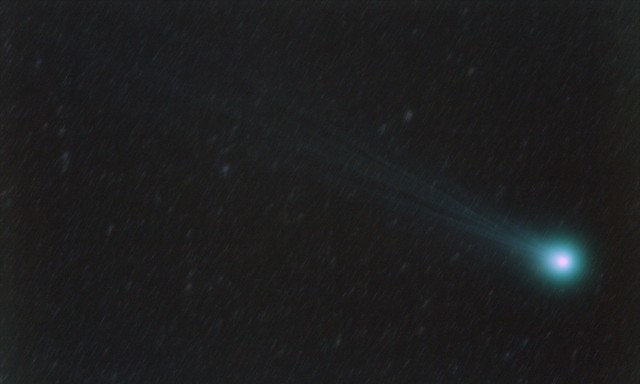
Moving further west each night, Comet Lovejoy Q2 continues to change and present a different profile each day. It has gone back to a fan tail with streamers, much like it looked back on Jan 25 and Jan 16, 2015. There is a pattern there, but the period remains elusive.
Continuing Comet Lovejoy Coverage
Comet Lovejoy in 15 Minutes
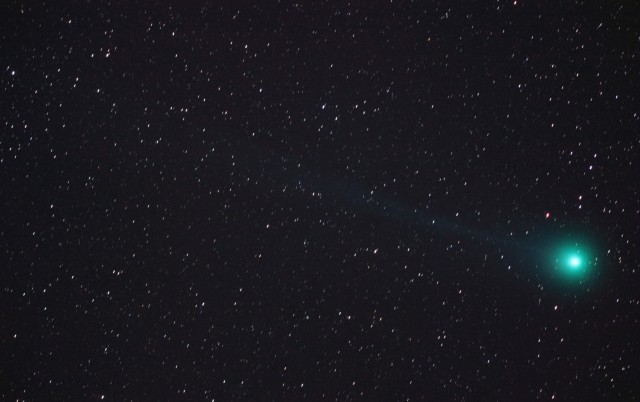
I’ve been wanting to shoot some sub-images of Comet Lovejoy at relatively low ISO’s and for at least 15 minutes. Here’s one that was shot at ISO 200 and boosted up a bit with some curves manipulation in PS. So, this is a representation of old-school, one-shot imaging like I used to do back in the day with film. You don’t have much in the way of post processing since the image looks fairly nice without that sort of thing.
Update:
Here’s the preliminary image from the data captured in the same session as the above:
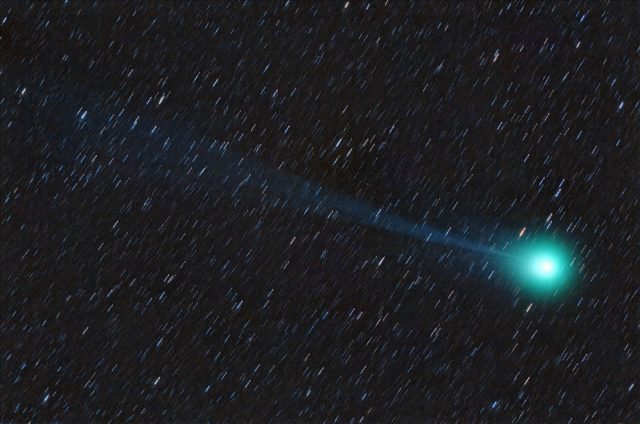
C/2014 Q2 (Lovejoy) on Feb 7, 2015, 01:03 UT
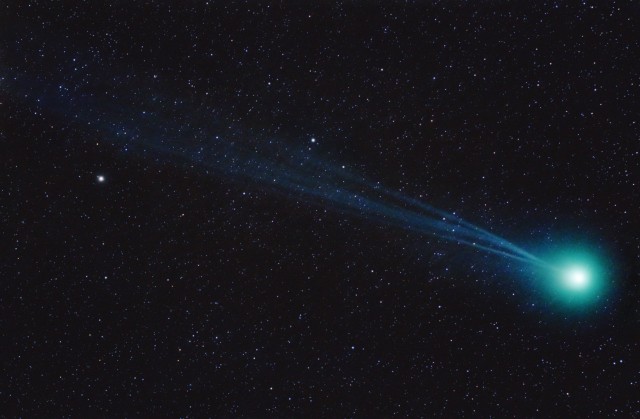
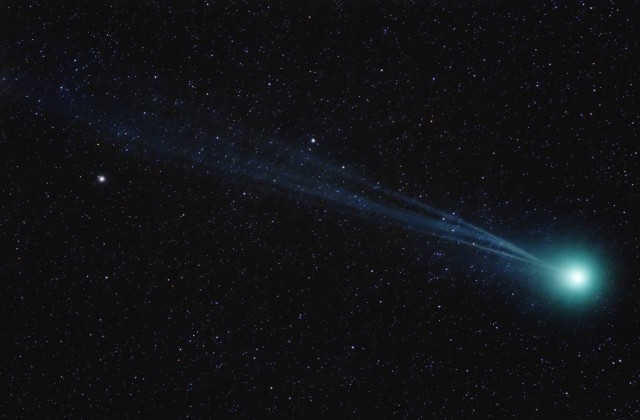
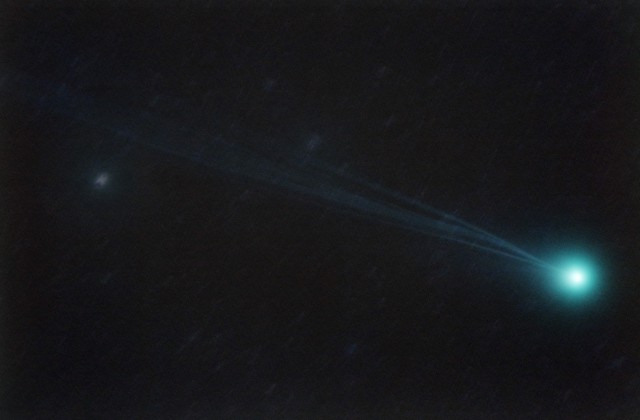
Ok, I got some decent data on this imaging session, even though there were some high altitude clouds that came and went a few times. Then, the moon rose and I stopped imaging at that point. Lovejoy is presenting its thin, edge-on tail mode to us on this night. It makes the tail brighter, that’s for sure.

